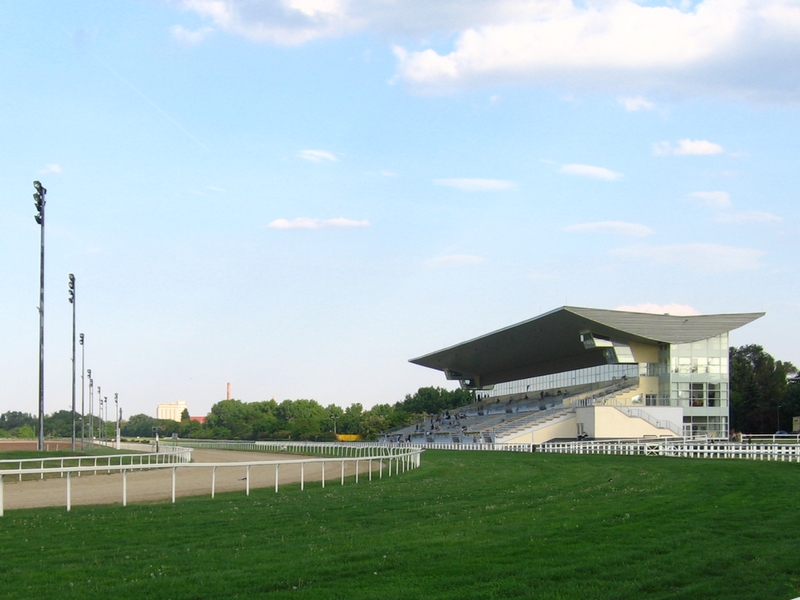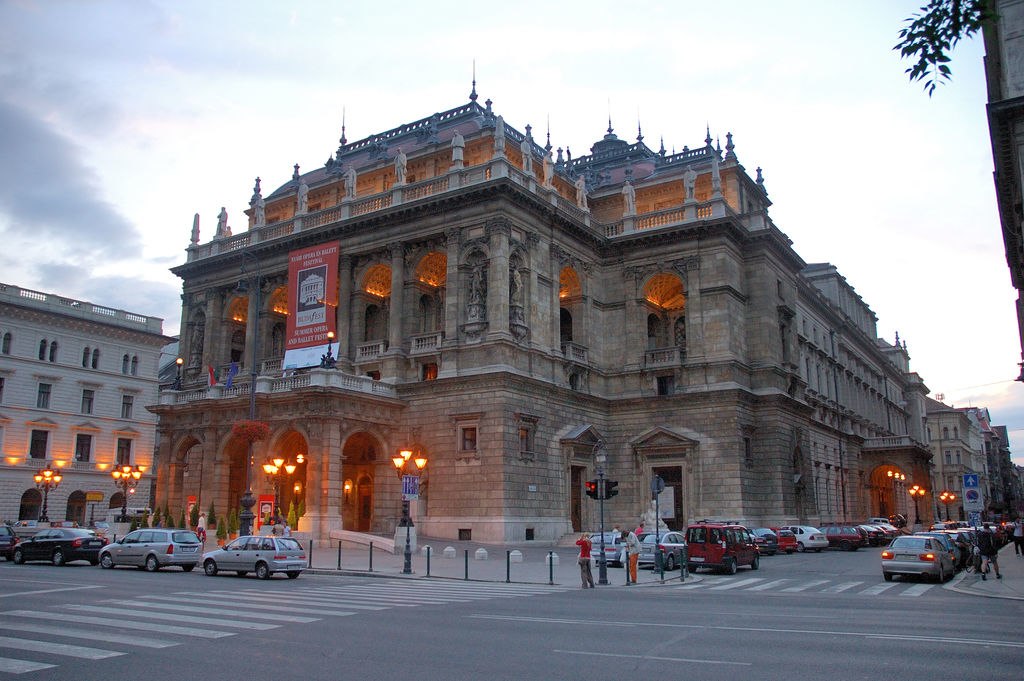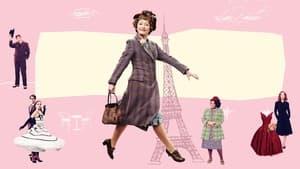Mrs Harris Goes to Paris filming locations include the Albert Bridge, King’s Arms and Windmill Walk in London, the Pont Neuf in Paris, Budapest’s own Moulin Rouge, Brody House, New York Café, Andrássy Avenue and Kincsem Park.
London cleaning lady Ada Harris (Lesley Manville) sees a haute couture Christian Dior dress in a client’s wardrobe. From that moment onwards, she dreams of owning a real Dior gown. She starts taking on all the extra work she can to visit the designer’s boutique on Avenue Montaigne.
Her friends Vi (Ellen Thomas) and Archie (Jason Isaacs) help her along the way in Battersea. Once she reaches France, the charming ‘face of Dior’ Natasha (Alba Batista), accountant André Fauvel (Lucas Bravo), and Marquis de Chassagne (Lambert Wilson), help Mrs Harris to navigate the Parisian fashion world.
Where Was Mrs Harris Goes to Paris Filmed?
Mrs Harris Goes to Paris was filmed on Windmill Walk, Roupell Street, Wilton Crescent and the Albert Bridge, Pont Neuf in Paris, Budapest Operetta Theater, Andrássy Avenue, Ferihegy Airport and Aeropark.
The production was based in Budapest, Hungary, but certain scenes were filmed in the real London and Paris.
“I always insisted we had to shoot some of the film in London and Paris to reinforce the authenticity. So for example, the Albert Bridge is the real Albert bridge, and the Wilton Crescent in Belgravia is really Belgravia… There were things that you could never have found in Budapest.”
Anthony Fabian, Director
Backdrops including Notre-Dame, Battersea Power Station and the Eiffel Tower complete the pan-European scene. Of course, the film’s twin city settings were predetermined by the novel Mrs Harris Goes to Paris was adapted from.
The movie is based on Paul Gallico’s 1958 novel, known as Flowers for Mrs Harris in the UK and Mrs ‘Arris Goes to Paris in the US. Gallico wrote several more adventures, sending Mrs Harris to New York, the Houses of Parliament, and Moscow. And this is not the first time the book series has been adapted for the screen.
Past versions include a German version of the Dior dress adventure, and a 1982 TV movie with an all-star cast. If you’re wondering, the 80s version starred Angela Lansbury as Ada Harris, Dame Diana Rigg as the intimidating Mme. Colbert and Omar Sharif as the Marquis.
Filming Locations
The Albert Bridge
 Albert Bridge. Iridescent, CC BY-SA 3.0
Albert Bridge. Iridescent, CC BY-SA 3.0
The real Albert Bridge in London appears in Mrs Harris Goes to Paris. It’s seen throughout the film from the opening scene, with Mrs Harris talking to her missing husband as she crosses the Thames. It leads from Battersea to Chelsea, setting the tone for Ada’s daily journey from her working class neighbourhood to the smart homes she cleans each day.
With its twinkling lights, the Albert Bridge is a popular filming location that shows up regularly in movies including Sliding Doors.
Mrs Harris’s Flat
Mrs Harris’s flat was a set built in Hungary, not South London, but the details inside it were all British. The film’s production designer took care to bring in details that would look convincing enough, down to the wallpaper.
“Ada’s flat, interestingly, we also did in the studio. I’ve watched the film and I know that, and I'm still completely convinced that we're in a real place. That's the magic of cinema. For that, for example, Luciana chose William Morris wallpaper and details that were 100% authentically English.”
Anthony Fabian, Director
The King’s Arms
The Mrs Harris Goes to Paris pub location is The King’s Arms near Waterloo, on the corner of Windmill Walk and Roupell Street.
Look out for the railway bridge at the end, which belongs to London Waterloo East railway station. In the film, the pub is local to Mrs Harris’s home in Battersea. We think it’s suggested that this is part of the Southern Railway line that runs through Battersea Park and on towards Clapham. Much of line in this area still holds onto its brick arches, which are similar enough to Waterloo East’s.
Unsurprisingly, Windmill Walk and Roupell Street’s historic appearance have made it a popular filming spot. Look out for the conservation area in the likes of Legend.
Battersea Power Station
 Battersea Power Station. Alberto Pascual, CC BY-SA 3.0
Battersea Power Station. Alberto Pascual, CC BY-SA 3.0
Look out for a glimpse of Battersea Power station in the background. It has, of course, just completed a years-long renovation to become a luxury apartment complex. The impression we get in the movie reflects its present day elegance, but in Mrs Harris’s day it may have been decidedly smoggier.
By 1957, the fourth chimney had been completed and Battersea Power Station was in full operation. It closed around 25 years later, and would sit empty for decades before the current plans finally caught on.
Lady Dant’s House
Lady Dant’s (Anna Chancellor) Belgravia townhouse location is Wilton Crescent, in London’s real Belgravia. In Mrs Harris Goes to Paris, we see Ada and Vi going to work cleaning townhouses in this perpetually smart part of London.
While the Georgian architecture is authentic, the interiors were filmed in a townhouse in Budapest. It’s in one of these sets that Mrs Harris first sets eyes on the £500 dress (while her employer, Lady Dant, avoids settling up her cleaning bill).
Giles Newcombe’s Building
The filming location used for Giles Newcombe’s (Christian McKay) stairwell is the Brody House in Budapest. In the movie, Mrs Harris passes Mr Newcombe on the stairs with a different young companion, or niece, every day when she arrives to clean his flat.
This elegant townhouse was built in 1896, making it a great candidate for replicating Parisian fin de siecle style. In reality, it’s now a multipurpose venue that hosts arts events, a bar, and rooms you can book to stay in.
The Dog Track
 Kincsem Park. English Wikipedia user Gvarady, CC BY-SA 3.0
Kincsem Park. English Wikipedia user Gvarady, CC BY-SA 3.0
The greyhound racing track location in Mrs Harris Goes to Paris was Kincsem Park in Hungary. Located in Budapest, Kincsem Park has been the home of horseracing in Hungary for almost a century.
The scene follows Mrs Harris and Vi as they take up Archie’s offer of free tickets to the races. Of course, Mrs Harris is tempted to bet more money than she should in the hope of achieving her dream.
It actually took some sleight of hand for Anthony Fabian to bring Archie the bookmaker into the movie. The character originally appears later in Paul Gallico’s Mrs Harris book series.
“There’s no Archie in Mrs. ‘arris Goes to Paris, but there is an Archie character, starting with the second book, who becomes her companion in the second, third, and fourth books. We introduce some of these elements that I think made it richer, and yet I think people who are devoted to the original won’t be disappointed by these additions.”
Anthony Fabian, Director
Paris Le Bourget Airport
The airport scenes were filmed at two locations, Ferihegy and Budapest’s open air flight museum, Aeropark. Originally known as Budapest Ferihegy International Airport, the city’s Ferenc Lizst International Airport is still often referred to as Ferihegy.
Ferihegy Terminal 1 has been closed to the public for several years. In that time, it’s launched a film career, appearing in movies like Inferno… and the Mrs Harris Goes to Paris airport scene, of course.
Aeropark is actually housed at the same airport, beside Terminal 2B, and is devoted to the history of aviation in Hungary.
Wondering if you can fly into the real Paris Le Bourget? It opened in 1919, and for many years was the French capital’s first and only airport. But after other airports began to open up and draw more traffic, Le Bourget halted regularly schedules commercial flights in 1977. The giant lettering where Mrs Harris takes her first look at the city (and considers the long walk) is a real feature of the airport.
Pont Neuf
Mrs Harris and André Fauvel (Lucas Bravo) walk together by the real Pont Neuf in Paris. They walk along the area by Les Jardins du Pont Neuf http://www.lesjardinsdupontneuf.com/ beneath the city’s oldest stone bridge. Built in 1578, Pont Neuf is an iconic Parisian site and filming location, recently making an appearance in Netflix’s Emily in Paris and Lupin.
30 Avenue Montaigne
Mrs Harris Goes to Paris filmed the Avenue Montaigne scenes on Hungary’s Andrássy Avenue. The movie’s home of the House of Dior is an elegant shopping boulevard in the heart of the city. It was completed about 20 years after the real Avenue Montaigne, in the late 19th Century.
However, Christian Dior (Philippe Bertin) and Claudine Colbert’s workplace interiors were filmed on set at the production’s Budapest studio base. Production designer Luciana Arrighi had worked as a model for at 30 Avenue Montaigne in the past, and was given access to notes, archives and images from the label.
On top of that, Dior provided authentic items that appeared around the set alongside a medley of vintage and vintage-inspired pieces.
“We had tons of real exclusive rolls of fabrics… The mannequins were provided by Dior, as were some of the furnishings. From the largest pieces of furniture to the smallest decoration pieces, everything was either custom-made or an original from an antiques shop.”
Nora Talmaier, Set Decorator
30 Avenue Montaigne is still the address of the Dior Boutique, as it was in the days of Christian Dior himself. In reality, striking workers were no stranger to Dior by 1957.
When the boutique first opened eleven years earlier, the first collection’s presentation was delayed by an invasion of striking workers from a nearby building. They flooded the building to demand that Dior’s workers down tools in solidarity with their neighbours.
The Fashion Show
Mrs Harris Goes to Paris’s fashion show scene was filmed on set in Budapest. The face of Dior herself, Natasha, features heavily in the scene as Mrs Harris watches alongside Parisian high society.
Alba Batista, who plays the fashion house’s main model, credits the set and costume design with helping her to get into character.
“The set design was so well-made, and as soon as I put on a piece of art of a dress, I could instantly transport myself and feeling glamorous and beautiful...”
Alba Batista, Natasha
The Christian Dior dresses themselves were recreated by The King’s Speech, Cruella and Gosford Park costume designer Jenny Beavan. She was tasked with replicating Dior’s New Look-era designs from the silhouettes to the tiniest signature details.
And the Temptation dress was specially designed, drawing on dresses from Dior’s 1957 collection. It was created to bring in elements that would appeal to Mrs Harris, like a simpler silhouette (albeit decorated in ornate embroidery).
La Samaritaine
This one’s not strictly a filming location, but it’s worth picking up on this name-checked store because you can really visit it. Translated as “a department store” in the credits, Claudine Colbert (Isabelle Huppert) instructs André to send Mrs Harris to La Samaritaine.
Built in 1870, La Samaritaine came into its own in the early 20th Century thanks to an Art Nouveau renovation. The iconic building closed in the early 2000s, but has recently reopened its doors following a multimillion euro refurbishment.
Parisian Streets
 Hungarian State Opera House. PDXdj at English Wikipedia, CC BY-SA 3.0
Hungarian State Opera House. PDXdj at English Wikipedia, CC BY-SA 3.0
Look out for the streets and steps of Budapest’s Castle District as Natasha drives Mrs Harris to Andre’s apartment. Historic Buda Castle sits on a hill surrounded by old lanes and tottering staircases, hemmed in by boulevards from the city’s later developments. We also catch a glimpse of the Opera House and Liszt Ferenc Academy of Music.
The Flower Market
Mrs Harris and the Marquis visit a flower market in Paris – the real flower market location is in Budapest with some Parisian CGI. Notre-Dame Cathedral was added as a backdrop later. But while it’s not strictly accurate, the setting recreates a real flower market that 1950s Parisians would know.
Between the famous market and the architectural icon in the background, it’s a quintessentially French setting.
“Although we showed great backgrounds of both cities, I think the scene in the flower market with the great Notre Dame behind Mrs. Harris says Paris to me.”
Luciana Arrighi, Production Designer
The real Paris flower markets have changed over time. But you can still visit Marché aux fleurs at Ile de la Cité for a similar excursion.
The Cabaret
We think the cabaret scene was filmed at the Imre Kálmán Theater at the Budapest Operetta Theater, or Budapesti Operettszinhaz. In the film, it’s implied that the Marquis de Chassagne (Lambert Wilson) has brought Mrs Harris to the Moulin Rouge in Montmartre, or a similar show.
This is an interesting choice, because the Paris and Budapest cabaret venues used to share a name. The Imre Kálmán Theater was separated from the main theatre in 1922, and known for a time as the Moulin Rouge.
Café de Paris
We think the locations for Café de Paris in Mrs Harris Goes to Paris are the New York Café in Hungary and the Adria Palace. The now-defunct London café is the setting for the fateful scene that’s relayed through Pamela Penrose’s note and in the newspaper story.
New York Café is a swish coffee house opened in 1894, but a turbulent 20th Century saw it change use several times. In the early 2000s it took back its status as a stylish café, with locals advising that it can be fairly busy thanks to its popularity with tourists.
Filming took place here for the movie, and we think this is the scene of Pamela’s dinner. We think the marble staircase where the press photo is taken belongs to the Adria Palace in Budapest.
